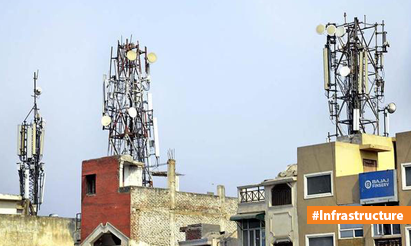Land pooling schemes: A viable alternative to land acquisition!
The road to developing into an infrastructure behemoth in India was littered with squabbles between the government and landowners. The passage of the Right to Fair Compensation and Transparency in Land Acquisition, Rehabilitation, and Resettlement Act, 2013 (RFCTLARR, 2013) (now referred to as the Land Acquisition Act) in 2013 provided considerable assistance. Conflicts over inconsistent, inadequate pay, and claimed forcible purchases, on the other hand, drove the states to find a replacement, and the Land Pooling Act emerged as a popular solution. Many states have announced their separate Land Pooling Acts since land acquisition and commandeering fall under the concurrent list.
Land acquisition vs. land pooling
Since the period of the green revolution, land acquisition for infrastructure development in India has been a source of contention. As a process, land acquisition necessitates effective negotiations and a strong rehabilitation philosophy. Notwithstanding recurrent revisions to the Land Acquisition Act, issues such as a lack of effective practices, a lack of social environmental impact study, insufficient compensation, and non-development despite acquisition or forceful expulsion have maintained recurrent issues with the process.
Notwithstanding legal troubles, land acquisition efforts have played a significant role in infrastructure development around the country. Among them include the accessibility of enormous land swaths at once and total government ownership. Considering this, the issues of the grassroots residents forced authorities to look for feasible alternatives to land acquisition, and so the notion of land pooling evolved.
Land pooling is a practice in which a group of landowners jointly hand up their land parcels to the government for infrastructural development. When the development is finished, the land is returned to the original owners after a portion of the cost has been deducted. The key advantage of the land pooling policy is that the original titleholder retains ownership. It lowers the likelihood of legal conflicts and compensation payments.
The land pooling policy, on the other hand, requires a particular number of landowners to consent to the procedure. Dissatisfaction among certain landowners is a regular obstacle in this business.
Here’s a short comparison of the two methods.
Pros And Cons Of Land Pooling Scheme
| Land Pooling | |
| Advantages | Disadvantages |
| A self-financing method that is less expensive than land acquisition. | Slow progress |
| Original owners maintain ownership. | Capital value appreciation may take time. |
| Land disputes are less likely. | In the absence of rigorous zoning rules, there is a risk of inappropriate land use. |
| Cost and benefit sharing that are equitable. | In dense metropolitan locations, this is difficult to implement. |
Pros And Cons Of Land Acquisition
| Land Acquisition | |
| Advantages | Disadvantages |
| The land is owned by the government. | Current proprietors may be unwilling to relocate. |
| Accelerated development. | Lackluster rehabilitation and insufficient |
| Compensation is a primary consideration. | Compensation is ensured through rehabilitative measures. |
| Acquisition of irrigated land poses a long-term danger to national food security. | Frequently seen as a lasting solution for infrastructure development |
When it comes to the land pooling policy, the main advantage is that because the policy encourages collaboration, there are more opportunities for Public-Private Partnership (PPP). Furthermore, the lengthy and technically difficult procedure of land purchase is no longer required.
The states are in a considerably better position to consolidate land than in the past. Integrative land resources contribute to tackling the issues of growing urbanisation.
A Prime Example Of A Land-Pooling State Is Delhi.
The goal of sustainable urbanisation is central to land pooling policies. The administration’s attempts to pool land in Delhi have proved to be an effective strategy. Delhi’s land pooling strategy is intended to meet the issues of urbanisation and the growing need for sustainable infrastructure. Because of the Delhi Development Authority’s (DDA) significant outreach programmes and widespread implementation, a total of 6,000 hectares (approx. as of 6/2019) (source PIB) of land was registered on the DDA website. The landowners were interested in the planned sector-based strategy for development, the building of 85,000 houses on pooled property, and the development of trunk infrastructures such as water, power, and other essential services.
States’ increased adoption
The western state of Rajasthan, like Delhi, Maharashtra, Gujarat, Andhra Pradesh, and Tamil Nadu, recently notified the Land Pooling Act. Landowners whose property has been purchased shall get 45 percent of the developed land as compensation under this Act. Previously, this barrier was set at 25%. According to the updated laws, the responsible local authority would provide the owner with a proportional and constructed parcel of property. It will include critical facilities such as roads, parks, and adjacent open areas.
The government will solicit expressions of interest from farmers and landowners of a specific size under the plan. According to the Act’s stipulations, the pooled land would be used for infrastructure development without actually purchasing the land. The authorities will operate as a mediator for land development, developing land swaths in accordance with the layout guidelines and bye-laws.
Rajasthan, in reality, is replicating the successful ‘land pooling’ model of Mumbai and Delhi.
The important component to the landowners is that they obtain a developed land parcel with exposure to infrastructure services instead of a low-value undeveloped land lot. The consolidation of fragmented property parcels creates a greater landmass for future residential and commercial constructions.”
Finally, land pooling plans benefit both the proprietor and the government. The government obtains a large land bank for development, while the landowner receives developed land in a better location. Although the concurrent list of the constitution includes ‘acquisition and requisitioning of land,’ the Central Government must develop strategies for the gradual repeal of the Land Acquisition Act and greater acceptance of land pooling plans.
Disclaimer: The views expressed above are for informational purposes only based on industry reports and related news stories. PropertyPistol does not guarantee the accuracy, completeness, or reliability of the information and shall not be held responsible for any action taken based on the published information.




